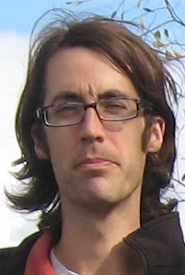Hittin' the marsh
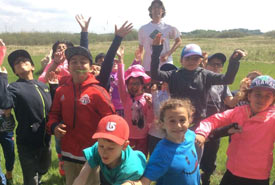
My one educational breakthrough was to teach them to emulate my hayseed ways by chewing on a piece of grass before touring the property (Photo by NCC)
It wasn’t even really that hot. I think that’s the thing that got me. Warm? I guess…for early June. Sunny? Mostly, but there were clouds and a bit of a breeze, so even saying it was warm is pretty generous. And forget about a change of clothes because I am positive that Ruth Sestak’s Grade Four and Five students from Brunskill Public School in Saskatoon did not plan to explore the wetland that thoroughly during their trip to the Chappell Marsh property, which sits within muck-flinging distance of the southern part of Saskatoon. The marsh is owned by Ducks Unlimited Canada (DUC), managed by Meewasin with a conservation agreement held by the Nature Conservancy of Canada (NCC).
Janet McVittie and Melanie Elliott from the University of Saskatchewan’s College of Education worked with me and Barb Hanbidge of DUC on this event. It was an opportunity for kids to learn outside the classroom during Wild About Saskatoon’s annual Nature City Festival.
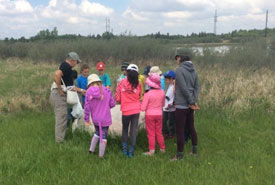
Learning about glacial erratics...and checking for ticks on the back of your pants. (Photo by NCC)
I thought I would be joining the tour to provide my plant and ecosystem expertise to the kids, because, you know, kids want to know the scientific name for western wheatgrass. The first class stayed at the pond, dipping an assortment of water-critters, vegetation and dirt from the water. They learned the critters’ names and a bit about what they might indicate about the quality of the water and wetland they’d been found in.
The second grouped walked along some of the paths around the wetland. They learned the names of some of the plants, spotted a few birds enjoying the water within view of Saskatoon’s suburbs and collected ticks (that was just a happy bonus).
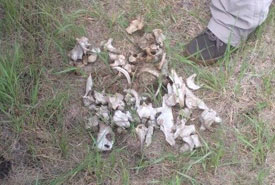
And the tale of its demise was widely agreed to be...gross (Photo by NCC)
I quickly found out that the leader of the tour, Melanie, an outdoor education expert from the University of Saskatchewan, knew a lot more about getting kids interested in nature than I did. She had them poring over the bones of a recently killed mammal like they were reading a map. She shared with them how the rock sitting at the intersection of two paths wasn’t just an erratic, but came from a certain volcano near La Ronge in central Saskatchewan and was moved here via glaciers.
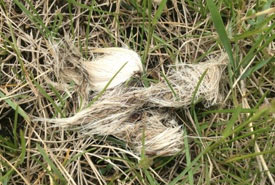
Token tuft of hair (Photo by NCC)
I missed a bunch more of Melanie’s facts and nature stories because I found a cool bug. Anyway, I’m pretty sure Melanie will have a bunch more stories for next year, because by the time we got back pretty much every kid doing the dipping was dripping. Would any of my grade school teachers allowed an entire class to pretty much jump into a pond? Okay, fine, a couple of them probably would have liked to have thrown us in, but the point is their teacher stayed totally calm when her kids got more hands-on than anticipated, and the kids had a blast learning about something the rest of us probably drive by without a thought.
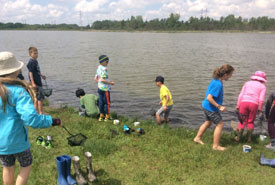
The really good dipping is obviously further from the shore (Photo by NCC)
Couple that with an expert outdoor educator who knew exactly the right stories to tell about the land we were on and NCC’s shared effort to protect this resource, and you have an the formation of a new generation of ecologists.
This field tour taught me that there are different ways to appreciate nature, and being ankle-deep in it can change your perspective (and probably stain your clothes, but I haven’t heard back from any parents, so...). That and you can’t dry your socks in the time it takes to walk from the shore to the bus.

